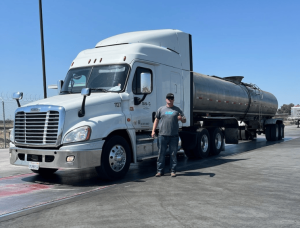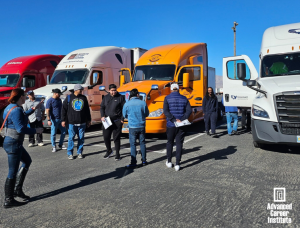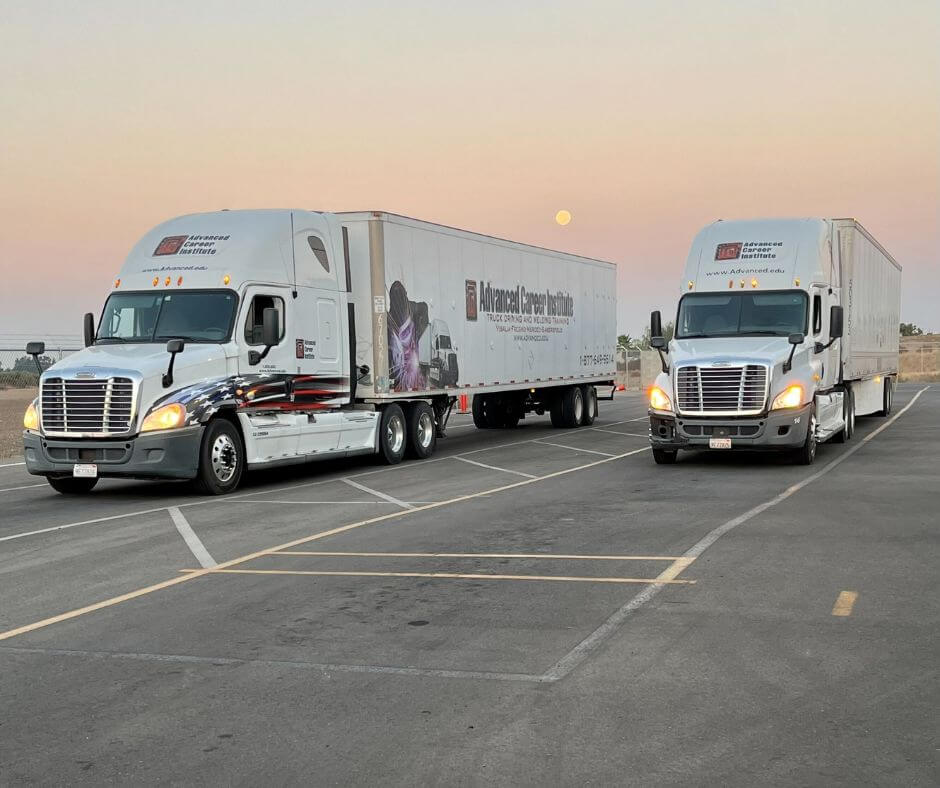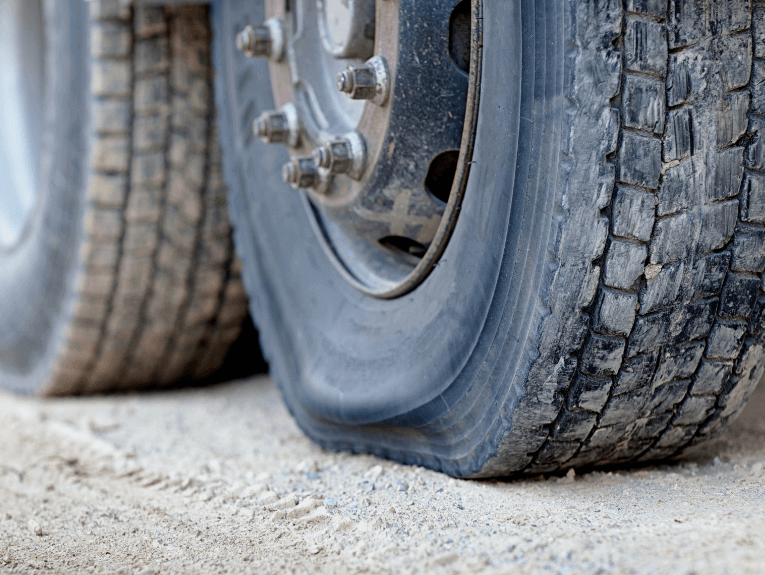Uncategorized
Helpful Information About Potential Welding Careers & Trucking Jobs
-

Advanced Career Institute has all the Information for Truck Driving Students
The journey to becoming a professional truck driver has begun. Whether you’re a first-time driver or looking for a CDL refresher course, Advanced Career Institute is ready to show each of our students their future in the trucking industry. This guide is to help our students learn more about the programs we offer, how they can pay for it, and steer them toward a successful career.
Looking for a particular resource? Jump ahead!- CDL Training Programs at ACI
- Financial Aid for CDL and Truck Driver Training
- What to Expect in Truck Driver Training
- Prepare for Your CDL Permit Test
- More CDL Training Questions? We've Got Answers!
CDL Training Programs at ACI
Here at Advanced Career Institute, we offer a variety of different CDL classes at different campuses to help incoming students prepare for their new career in the trucking industry. This includes a variety of Class A CDL courses as well as a refresher course for those who have previously received their commercial driver's license.
Professional Truck Driver Program
Our Professional Truck Driver Program, offered at all 5 of our campuses, is our introductory truck driver training program. This course is designed for students who have no prior experience in the industry and are looking to get their CDL. This training has extensive classroom training and behind-the-wheel practice to prepare you for the exam. This course is 4 weeks long and will total 160 hours of classroom and range training.
Advanced Professional Truck Driver Program
For students who would like more time to build their skills behind the wheel, we offer an Advanced Professional Truck Driver Program. This 6-week course covers the same crucial topics included in our Professional Truck Driver Program but adds more time in the driver's seat to prepare for the Class A CDL exam.
Ag Transportation
If you’re interested in our Ag Transportation program, offered at both our Visalia and Las Vegas campuses, it is also open to students with no prior experience. This extended course provides advanced training to students on procedures for both the truck driving and agricultural industries. Like with our other truck driver training programs, you’ll be prepared for the operations of truck driving, but also be instructed on how to transport products and equipment in the agricultural industry. For this 20-week course, students will have ample time to become comfortable behind the wheel and transporting specialty agricultural materials.
Commercial Driver 3-Week Program
The Commercial Driver 3-Week Program is an expedited course for students who already have a valid CDL Permit in California or Nevada, and a valid DOT medical card. This course is a behind-the-wheel only program to prepare students for the driving portion of the exam. With only 120 hours needed to complete this course, our staff works quickly to ensure that students are ready to hit the road with confidence as soon as possible.
Financial Aid for CDL and Truck Driver Training
At Advanced Career Institute, we help all our incoming students find ways to pay for the CDL training they need. When our students meet with the Financial Aid Office, the goal is to find the right payment method for them. This could include using any military benefits, government funding, or payment plans.
Many students who walk through the door may qualify for military benefits when they choose to enroll at Advanced Career Institute. Whether they are an active military member, a veteran, or a family member of a military member, they may be eligible for a variety of financial aid programs.
Programs you may qualify for
- Post 9/11 GI Bill
- Montgomery GI Bill (MGIB)
- Special Vocational Training (SVT)
- Survivors and Dependents Educational Assistance Program
- Selected Reserve (MGIB-SR)
- Reserve Educational Assistance Program (REAP)
- DoD Tuition Assistance (TA) Program
- Military Spouse Career Advancement Accounts (MyCAA)
If you’re not interested in taking out a loan, or you cannot qualify for grants, Advanced Career Institute also offers payment plans as an alternative. This will break the tuition cost into equal monthly payments. Our Financial Aid office will also be happy to help you set up automated payment plans for your schooling. If you’re interested in setting up monthly payment plans, our Financial Aid Office will work to find the right fit for you!
If you’re interested in other payment options, check out our tuition assistance page for a full list of financial aid opportunities.
What to Expect in Truck Driver Training
At Advanced Career Institute, our courses are designed to combine classroom training and behind-the-wheel practice. Classroom training is built to prepare you for the CDL written exam with the Department of Motor Vehicles. Driving on the range and practicing on the road are also a crucial part of obtaining your CDL.
The first step in each of our courses is to prepare students for their CDL permit test. This takes place during the first week of training, and we prepare our students to obtain their Class A driving permit with all endorsements, except for the hazardous materials endorsement. This endorsement requires that you take an additional Hazmat theory course that is included in the Entry-Level Driver training prior to the exam.
Once a student achieves their permit, we will start entry-level driver training. This includes everything a student can prepare for when getting on the road behind the wheel. From different weather conditions to night operation and space management, our students will learn the proper protocol when handling the truck. Our students also learn the importance of pre-trip inspection and post-trip inspection. During this time, we teach them how to identify parts and inspect their vehicle to ensure safety.
When our students are able to understand their truck inside and out, that’s when we get them driving. Students start training with basic maneuvers such as backing, alley docking, parallel parking, and coupling/uncoupling. Students will also learn basic handling of the truck both on the range and the public roads. This is the longest portion of the training, ensuring that students are safe and comfortable behind the wheel prior to taking their exams.
Prepare for Your CDL Permit Test
The CDL training courses that are offered at Advanced Career Institute are designed to help you prepare for the exams, but attending class is not the only way to prepare. Students must also put forth the effort in preparing for the test. It’s important to study and become proficient in every aspect of truck driving to pass. It’s important that students don’t simply memorize terms and rules; they need to understand the concepts and feel comfortable in the driver’s seat. It’s also important for students to practice their exam, with several online options like this CDL practice exam for students to take. This will prepare students for the California DMV written tests. If you’re looking for ways to study outside of the classroom – take a look at this DMV CDL study guide, or this online CDL Test Study Guide.More CDL Training Questions? We've Got Answers!
In this blog, we’ve answered a lot of questions about what to expect as a new CDL student. But what if you have other questions? We’ve created a section of frequently asked questions for incoming students or people just interested in learning more. Our staff is also a wealth of knowledge when it comes to trucking and is ready to answer any questions you may have about education or the trucking industry.Ready to Begin CDL Training? Start Your Trucking Career with ACI!
-

How did Logan, a Visalia grad, launch an out-of-this-world career in trucking?
Here at Advanced Career Institute, we value each student that walks through our doors. From the time they enroll, we want to help our students put the best foot forward toward their new career. We help our students earn a variety of endorsements in hazardous materials, air brakes, and tankers. Now imagine that your CDL tanker endorsement leads you to deliver key ingredients for rocket fuel at a well-known launch site. One of our graduates, Logan, got the chance to live this moment for himself after graduating from ACI, and we want to tell his story. Logan attended both our Visalia and Fresno campuses earlier this year, graduating just a few months ago. Before getting his tanker endorsement with us, Logan was doing something else exciting – loading helicopters. Working with the agricultural community, he helped prep helicopters to crop dust fields. Although, this wasn’t the job he wanted to have for the next 30 years, he wanted something more reliable.A New Path with Purpose: Why Logan Chose a CDL Career
 “I wanted a more reliable and steady income. Acquiring a CDL makes you employable in the 49 continental states,” he states, “I wanted to always have steady employment to help raise my kids.”
After multiple people recommended Advanced Career Institute, Logan chose to enroll at our Visalia campus.. When asked about his experience at both the Visalia and Fresno campuses, he had nothing but kind things to say about the staff members. From start to finish, there were staff members and instructors that helped him to succeed.
“Melissa was so perfect at the pre-trip and wouldn’t allow anyone to cut corners, she didn’t want to make us unsafe drivers.”
“I wanted a more reliable and steady income. Acquiring a CDL makes you employable in the 49 continental states,” he states, “I wanted to always have steady employment to help raise my kids.”
After multiple people recommended Advanced Career Institute, Logan chose to enroll at our Visalia campus.. When asked about his experience at both the Visalia and Fresno campuses, he had nothing but kind things to say about the staff members. From start to finish, there were staff members and instructors that helped him to succeed.
“Melissa was so perfect at the pre-trip and wouldn’t allow anyone to cut corners, she didn’t want to make us unsafe drivers.”
More Than Just a Job: Driving Toward Rocket Launch Sites
In the short time following his training with ACI, Logan found himself employed quickly. Logan started to drive tanker trucks with a lot of different contents. One of these deliveries being calumet – an inactive ingredient in rocket fuel. While it’s considered a non-hazmat material, Logan is working toward getting his hazmat endorsement. This is so that he can deliver more materials to popular launch sites. This would include hauling hazmat and doubles, so that he can haul all the materials needed for rocket fuel. While rocket fuel is not the only delivery Logan makes, his contract doing so has helped others. Most notably, he delivered materials to a launch station preparing to retrieve Butch Wilmore and Suni Williams from the International Space Station in March of this year.Eyes on the Horizon: What’s Next for Logan in Trucking
“Since graduating, I’ve hauled tankers, pneumatics, low beds, flatbeds, as well as bottom-dump and side-dump trailers – all for the same company.” He explained, “I’ve already got to haul eight different types of trailers over the course of two months.” Logan has been working hard from the beginning to give himself every opportunity in the trucking industry. He actively pursued his hazmat certification and licenses as a bulk milk hauler and sampler. This helped him gain valuable experience with each haul he completed. By making himself skilled in so many parts of the trucking field, he’s been able to assists companies like Kinder Morgan and Harris Ranch in transporting their products. We asked Logan what he would tell any future students at ACI. His best advice for future CDL drivers: apply yourself. “Don’t let any personal distractions come in the way of your future goals,” Logan recommends, “Once you get your CDL and find your place of employment, it’s a major relief.” He also mentions how important your driving record is for success in the CDL industry. He even made a comparison between a drivers performance and their resume. ACI is here to help each and every one of our students understand the importance of driver safety. Logan got to experience that first-hand at our Fresno campus. “I 100% know that Fresno will create a safe driver, and it will help them to acquire their CDL without fail if they attend that campus.” If you’re ready to launch yourself into a career in trucking, reach out to us today to get started! Learn the California requirements for tanker endorsements! -

Dynastie Arellano, one of our welding graduates from Advanced Career Institute shares her story!
In honor of Women’s History Month, we would like to celebrate Dynastie Arellano, one of our recent welding graduates. We appreciate all of our students and love to share in their success, which is why we’re sharing her story this month as a special spotlight. While men have primarily dominated welding, women made significant strides in the field during World War II. During this time, women stepped up to help in any way that they could. This movement coined terms like “Rosie the Riveter” or “Winnie the Welder” to symbolize the shift of women into the industrial workforce. This was just the beginning of the shift for women in the welding industry, and the number grows every day. After graduating from high school Dynastie found a passion for welding, picking it up as a hobby in her spare time. Wanting to further her education, she sought out a school that could help her get her certifications. “I went to school and I really fell in love with welding, so I decided to look for a school. Then I found ACI and I really liked it.” When asking Dynastie what the most enjoyable about her time at school, she told us about several experiences that helped her to learn and expand her welding knowledge. With a balance of hands-on practice and bookwork, she found that her hands-on experience is what really helped her to learn the trade better. During her time at ACI, she built a supportive community, learning alongside peers and gaining knowledge from her instructors. She found friends in her welding class to work together with and build a bond during her classes. “We would have little dinners with everyone, the whole class. The instructor, Jesse, and the others would bring food and it really helped us become more comfortable working together.” Dynastie spoke at length about how good of a fit ACI had been for her and really enjoyed everyone she worked with – from the administration team to the other students. “Jesse has been very helpful, and he’s just a bright spirit overall. He’s helped us with finding work. He’s given us the opportunity to finish our certifications before moving on to go to work as well.” After Dynastie graduated from ACI, she continued her education and continued to get more certifications before going into the workforce. She values the importance of preparation and doing her best work during her education, and she actively seeks to arm herself with as much knowledge as possible. “It’s not a race – everyone works at their own pace. Just don’t compare yourself to everyone. It’s a very competitive field, but everyone learns in their own time!” Here at ACI we work hard to provide an inclusive environment for all our students, regardless of gender! We commit to excellence in all our courses and always strive to help our students succeed in the welding field. If you're ready to start your journey toward a welding career, ACI will work with you to achieve your goals! Contact us today to get started! The number of women who have joined the welding profession is always growing, and we’re here to support your goals! If you've joined the welding community, explore these resources to learn more, especially for women interested in welding! -

Las Vegas Campus Celebrates Another Successful Open House!
On Saturday January 11th, we held an open house at our CDL school in Las Vegas for aspiring truck drivers. We held this event to allow people interested in our classes to get hands-on experience at our facility! From classroom tours, to meeting with industry professionals, and even allowing our prospective students to see our training yard and trucks up close and personal, we are happy to show them everything that Advanced Career Institute’s CDL school has to offer! [video width="800" height="800" mp4="https://advanced.edu/wp-content/uploads/2025/01/January-2024-Blog-Carosel.mp4"][/video] From the first day, we make it a top priority to prepare our students for their future! With state-of-the-art equipment and hands-on training, we are ready to show our students the importance of their work in truck driving. Advanced Career Institute combines comprehensive classroom instruction with hands-on range training to equip students with essential driving knowledge. Students gain valuable behind-the-wheel experience under the guidance of skilled instructors. We also offer hands-on truck driving simulation training to prepare students for real-world driving scenarios. Their state-of-the-art simulators provide a safe and controlled environment for mastering essential skills and techniques. The benefits of studying at Advanced Career Institute’s CDL school don’t stop there. Throughout your time here, you’ll have the opportunity to network with several of our trucking partners! We're here to help you build your relationships in our industry to help you kickstart your career! If you’re looking to drive your career in a new direction, Advanced Career Institute is here to help you! ACI open houses connect you with others and simplify the process of getting started! Keep an eye out for our next event! Call us at 877-649-9614 or reach out online to start your journey today! We would love to help you learn more about enrolling in your future! -

Exploring Future Industry Trends
In a world where technology keeps advancing, the trucking industry is gearing up for some big changes. From self-driving trucks to eco-friendly ways of moving goods, let's take a peek into what's ahead for trucking.Autonomous Vehicles
A hot topic in the industry is the arrival of self-driving trucks. Although fully self-driving trucks might not be here yet, we're already seeing some features that help trucks drive themselves a bit. Things like adaptive cruise control and lane-keeping assistance are being added to trucks. These features not only make driving safer but also help trucks use less fuel.Smart Planning with Data
Trucking companies now have superpowers thanks to data. They can track their trucks in real-time and use that info to plan better routes, save fuel, and make deliveries faster.Eco-Friendly Trucks
People are worried about the environment, so trucking is going green. Electric trucks that run on clean energy are becoming popular. They don't pollute like regular trucks and can save money in the long run.Keeping Things Moving, No Matter What
The COVID-19 pandemic showed how important it is to keep things moving, even when there are big problems. Trucking companies are learning to be ready for anything by making their plans more flexible and smart. In short, the future of trucking is all about using new tech and being kinder to the planet. While there are still some bumps in the road, like rules and roads that need upgrading, the future looks exciting. With teamwork between truckers, lawmakers, and tech experts, we're set to roll into a smarter, greener tomorrow for trucking! Get started in towards a career in trucking today! Call our admissions team at 866-951-4821 to learn more about enrolling with ACI! -

Learn the dangers of underinflated tires and how to avoid them
A recent study by Continental Tires revealed that 34% of fleet drivers regularly ride on underinflated tires. Continental’s survey pointed to a lack of driver knowledge about the risks of driving on underinflated tires and a lack of education on how to monitor and maintain tires as a culprit of this. This is epitomized by the survey’s other finding that only 50% of fleet drivers know the optimal inflation level for their tires. In an attempt to combat this problem, here are some of the risks associated with driving on underinflated tires and some measures that truck drivers can take to ensure this does not happen.Risks of driving on underinflated tires
Reduced Traction and Poorer Steering -Underinflated tires will not grip the road as well as tires that are fully inflated. This means that vehicles can be more challenging to steer, particularly in wet conditions or driving on imperfect road surfaces. This presents a real danger to road users. According to the National Transportation Safety Board, there are around 33,000 accidents each year due to tire-related issues. Underinflated tires are one of the most commonly cited issues of this kind. Increased Chance of Tire Blowout- When a tire is underinflated, pressure from the road transfers from the supple tread of the tire to the more brittle tire sidewall. As the tire’s sidewall is not designed to take such pressure, this can lead to tire blowouts. A sudden blowout on a highway can be very dangerous. Blowouts are estimated to cause 2,000 accidents each year in the US. Furthermore, blowouts can also lead to long periods of driver downtime and mess up schedules. Poorer Fuel Economy - Low tire pressure increases the amount of friction there is between the tire and the road. This means that it takes more fuel to move a vehicle at the same speed than when tires are properly inflated. Although this may not affect a driver too much, improving fuel economy is one of the biggest priorities of fleet managers and operators. This is because fuel consumption typically takes up 60% of a fleet’s total operating costs.How can Truck Drivers Ensure their Tires are Always Fully Inflated?
Knowing your tire inflation specifications - Given that 50% of truck drivers do not know the pressure that their tires should be inflated at, just knowing this basic information will help you be more responsible about your tires than most of your colleagues. You can find out your truck’s optimal tire pressure by looking at the vehicle’s driver manual. Generally recommended tire pressure is between 35-40 PSI, but this can vary from truck to truck. Measure your Tire Pressure at Least Once a Month - Since some air will always be leaking out of tires, it’s essential to check your tire pressure at least once every four weeks. You can measure tire pressure with a tire pressure gauge. This tool costs less than $15 and is small enough to be kept in your truck’s glove compartment. As the heat caused by driving (particularly highway driving) causes tire pressure to increase, you should always measure your tire pressure when your tires are “cold.” A “cold” tire has not been driven on for at least 2 hours. Although most trucks will be fitted with a tire pressure monitoring system, this will only alert you when a tire has deflated below 25% of its optimal pressure. This is far beyond the point where steering and fuel economy are affected, so it’s well worth regularly measuring tire pressure manually.Keep an Eye out for Outerwear on your Tires
If you drive underinflated tires for an extended time, the outer edges of your tire will wear faster than the middle of the tread. This is because more pressure is exerted on the outside of tires when underinflated. Remember, is why underinflation can lead to blowouts. We can often feel outerwear if we run our hand over the tread of our tires. You should be able to notice the tactile sensation of tire treads being shallower on the outside of the tread than in the middle. If this is the case, then it’s worth measuring your tire pressure to see if tires are underinflated, as well as being more diligent with keeping your tires inflated in the future. - Written by Mike Skoropad

